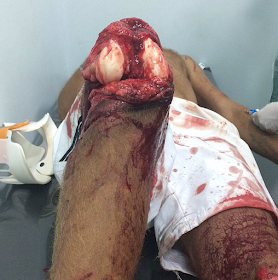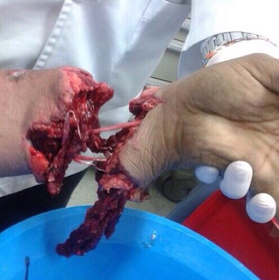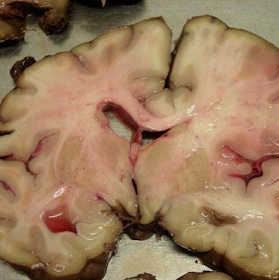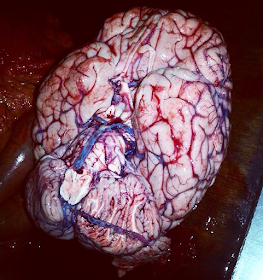You should change moderator minx to moderator thief who deleted people for calling you out on post thefts, BITCH!
Thursday, July 23, 2015
Monday, July 20, 2015
Sunday, July 5, 2015
Friday, July 3, 2015
Mausoleums of Mexico's Drug Lords
Mexico's most feared drug lords rest in peace in custom-built mausoleums. All famous for lives of ruthlessness and corruption and their violent ends. Just one remains alive, being held in a U.S federal prison. Gaudy
and provocative even in death, the 'narcos' of Culiacan have built
their own tombs, equipped with 24-hour air conditioning, wi-fi,
bedrooms, kitchens, home cinemas and other comforts for their families
who come to visit their remains. Mexico's
largest and most powerful mafia, the Sinaloa Cartel, is based in the
state capital Culiacan, and the town's cemeteries tell the stories of
the drug lords' immense wealth.
 |
| The brother of El Chapo, Arturo Guzman Loera was murdered inside prison while in conference with his lawyer. The Guzman family's mausoleums complex were constructed by his narco boss brother, Joaquin 'El Chapo' Guzman at a cost of $1,200,000. It features five separate buildings, one for each of the Guzman brothers of which he was the eldest and the only one still alive. The buildings all have air-conditioning, 24-hour surveillance, as well as en-suite bedrooms upstairs for visiting family members. |
 |
| Ines Calderon(The Engineer) was famous for his creative smuggling methods and was one of the first narco traffickers to introduce cocaine and heroin to the U.S. market in the 70s and 80s. The Engineers Roman-themed mausoleum cost a princely $550,000 to construct and has its floral decorations replaced every five days. Above the cavernous burial chamber, the upstairs with its domed ceiling still hosts top-level cartel meetings behind its tinted glass windows. |
 |
| The tomb of the wife of 'El Guero' - who the drug lord himself had murdered when she left him for another man. El Guero: Hector Luis Palma Salazar aka El Guero was famed for his ruthlessness and control of the authorities. He is currently housed in a U.S. federal prison.The mausoleum featured a spiral staircase leading to an air-conditioned bridal suite with a 360° view of the surrounding hills. It has wi-fi throughout, as well as a large dining hall and kitchen attached. Rumour has it that El Guero keeps the building smelling of his murdered wife's favorite perfume. |
 |
| The King of Crystal: Ignacio Coronel controlled the U.S. crystal meth market. He was famous for revenge overkill, and once sent 100 cartel hit-men to dispose of three rivals. Ignacio Coronel's modern mausoleum has an integrated music system throughout which senses where visitors are located and changes volumes accordingly. It also boasts wi-fi and a state-of-the-art alarm system which beams video of intruders directly to the smartphones of other Sinaloa Cartel bosses. |
 |
| Famous for his unpredictable mood swings and extreme violence, Manuel Torres Felix built this mausoleum for himself, complete with Greek marble columns and a fully-equipped kitchen. Known as The Crazy One, Manuel Torres Felix was a Sinaloa Cartel capo who would regularly go for three days without sleep. Known for his emotional instability and tendency to fly off the handle at the slightest provocation, he went on a killing spree in 2009 following the kidnap and murder of his son. The remains of his son's killers were found brutalized in the boots of their cars two weeks after their disappearance, a calling card for which he became famous. |
Thursday, July 2, 2015
Preserved Saints
'Incorruptible' bodies of saints whose remains are displayed around Italy for the faithful to worship.While some are mere fragmented bones, other corpses appear staggeringly well-preserved despite dying hundreds of years ago. The
saints supposedly belong to the world of the incorrupt - a Roman
Catholic belief that Divine Intervention allows some humans to avoid
decomposition after death as a sign of their holiness. Incorruptible bodies are often said to have the odour of sanctity, exuding a sweet or floral, pleasant aroma.
To
qualify as incorruptible, traditional belief dictates that the body
should not have been embalmed or mummified to achieve preservation but
should remain in tact naturally. Despite
this, many of the saints have been preserved through other trickery
since being taken from their original resting places - and many are
encased in wax, silver or bathed in carbolic acid. It was once thought incorruptibility was permanent but many of the saints belonging
to the so-called group have become little more than skeletons over the
years.The Church no longer counts incorruptibility as a miracle but sees it more like a favourable, if fading, sign from God.
All photos credit: Elizabeth Harper
via The Daily Mail










































